MOUNTAIN COVE, W.Va. — In a remote wilderness near the New River Gorge in what's now West Virginia, a mysterious experiment in religion and community emerged in the early 1850s. Known as "Mountain Cove," the short-lived settlement sought to bridge the earthly and the divine through Christian Spiritualism.
Two ministers from New York—James L. Scott and Thomas L. Harris—led several dozen followers into the rugged isolation of Fayette County from 1851. Their goal was lofty—to achieve a closer connection with God. The result, however, was a mixture of spiritual fervor, authoritarian leadership, and ultimate disintegration.
According to historian Benjamin Woodard, Mountain Cove was “a compelling response to the contradictions of mid-nineteenth-century America and of American Spiritualism—even if it also contained the seeds of its own demise.”
Despite its failure, Woodard says, the story of Mountain Cove offers an illuminating glimpse into the tensions and aspirations of antebellum religious life, revealing how spiritual ideology could shape social organization—and unravel it.
A community born of ghostly visions
The origins of Mountain Cove trace back to the 1840s in Auburn, New York, where a group of Spiritualist believers coalesced around the medium Ann Benedict. Into this circle stepped Scott, a Seventh Day Baptist minister from Brooklyn, whose “spirit-driven call to the mountain” inspired a move southward.
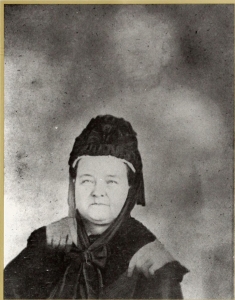
Soon, he was joined by Thomas L. Harris, a liberal Christian minister from New York City. Together, the pair transformed the community’s spiritual leadership, replacing Benedict’s influence with their own authority derived from claimed communications with God and the Apostles.
By August 1852, the Mountain Cove Journal and Spiritual Harbinger began publication, capturing the ideas and teachings of Scott and Harris for their followers.
Woodard explains, “By the time the Journal was launched, Scott and Harris already claimed not only communication with the spirits of various Apostles, but also direct inspiration from God. They had also begun to make increasing financial demands on their followers.”
The publication offers the clearest window into the commune’s spiritual vision, even if it sheds little new light on the eventual collapse.
Spiritualism Theology in print
Central to Mountain Cove’s ideology was the concept of the “Divine Unfolding,” a revelation of God’s will through “Disclosures from the Interior,” or the spiritual realm. Scott and Harris emphasized that while the living humans could only access this realm indirectly, the spirits themselves were agents of divine truth or deception.
“Spirits sent from God could be known by their accord with the truths of Christianity,” Woodard observes, “and these true spirits could not err. Thus, the Christian discernment of the mediums played an integral role in conversation with the moral-spiritual perfection of the spirits with whom they communicated.”
Scott and Harris’s writings also reveal the broader socio-political concerns of their age. They saw the 1850s as a period of spiritual crisis intertwined with social upheaval. Revolutions in Europe and the specter of a domestic class uprising suggested that the secular world and true Christianity were on a collision course.
Mountain Cove, the ministers argued, offered a model for resolving these conflicts: a community grounded in divine revelation, moral order, and charitable social organization.
Historiography and Controversy
Later historians and Spiritualist critics treated Mountain Cove with skepticism, often emphasizing its extremism. Some presented it as an outlier, a cautionary tale of authoritarian leadership and overreach within Spiritualism.
They condemned Scott and Harris’s claims to direct communication with God as inherently dangerous, asserting that such claims led inevitably to community disintegration.
Yet, not all scholars share this view. Woodard notes that Mountain Cove’s theology and practices deserve closer scrutiny beyond sensationalized accounts of failure.
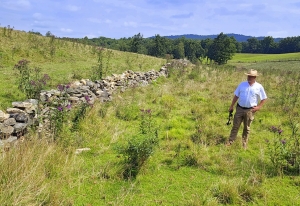
“The Journal revealed a complicated account of the spirit world, the relations between the living and the dead, and the role of religion that, while conducive to ministerial authoritarianism, responded to major concerns of antebellum Americans in general and American Spiritualists in particular,” he explains.
Bret Carroll, another historian of Spiritualism, aligns with this broader view, linking Mountain Cove to movements such as the Shakers and Mormons, both of which incorporated spiritual visions and revelations into their religious frameworks.
Woodard underscores that Mountain Cove’s blend of individual spiritual experience and centralized authority was not unique in the era, but it highlighted the tension inherent in Spiritualism between egalitarian communication with spirits and the legitimacy granted to recognized mediums.
The Collapse of Mountain Cove
Despite the clarity of their theology, Scott and Harris were unable to maintain communal harmony. Authoritarian tendencies, inconsistent teachings, and financial disputes fractured the community within a few years.
The Mountain Cove Journal, Woodard observes, was “remarkably consistent” across its fourteen-month lifespan, yet the real-life community struggled under pressures that the written word could not resolve.
Woodard speculates that a more thorough examination of Fayette County records might uncover additional insights into property disputes and personal conflicts that contributed to the commune’s collapse.
“Were I to have much more time,” he writes, “I would love to search for deeds and chancery records…that perhaps would have captured the legal spillover of the property and sexual conflicts that tore the community apart.”
Death, the Dead, and the Secularizing World
Mountain Cove also engaged deeply with cultural and theological conversations about death. The mid-nineteenth century is sometimes characterized as a period of secularization in American attitudes toward mortality.
Cemeteries became sites of leisurely promenading, and gravestones often emphasized sentiment over doctrinal orthodoxy. Critics argue that Spiritualism was a countercurrent to this trend, reinserting the living-dead connection into public consciousness.
Woodard offers a nuanced perspective, noting that neither full secularization nor complete spiritualization accurately captures the era. “Secularization need not mean a turn toward exclusive materialism,” he writes.
For Scott and Harris, the problem was not spiritual activity itself but its detachment from Christian morality. Non-Christian spirits represented deception, while Christian mediums mediated legitimate communication with the divine.
The hierarchy of spirits in Mountain Cove reflected this concern. The living were required to discern and prioritize the messages of morally and spiritually “right” spirits, often Christian leaders such as the Apostles.
As Woodard explains, “Recognition of the ‘right’ spirits depended on the moral and spiritual quality of the mediums, making good mediums extremely important in the life of the community, as was seen in the life (and death) of Mountain Cove.”
A lasting legacy in print
Though Mountain Cove dissolved physically, its journal endures as a record of the community’s vision and struggles. It captures the complex interplay of religious fervor, social ambition, and spiritual ideology that characterized antebellum America.
Woodard emphasizes that, even in failure, Mountain Cove offers lessons about the period’s preoccupations with morality, divine authority, and the proper place of the living in relation to the dead.
Ultimately, Mountain Cove stands as a testament to the ambitions and contradictions of mid-nineteenth-century Spiritualism. It illustrates the promises and perils of religious experimentation and reminds modern readers that theological visions—however compelling—must contend with human reality.
As Woodard concludes, “Mountain Cove’s Spiritualism provided a compelling response to mid-nineteenth-century Americans’ concerns, even if that response depended on the unquestioned authority of Scott and Harris, an authority which would be abused.”
Its story, preserved in the pages of the Mountain Cove Journal and Spiritual Harbinger, invites ongoing reflection on faith, power, and the interplay between the living and the dead.
Where was Mountain Cove?
The Mountain Cove community was situated in Fayette County, specifically within the New Haven District, a minor civil division of the county. This area is located near the hamlets of Hopewell and Victor near Ansted, West Virginia.
Sign up to receive a FREE copy of West Virginia Explorer Magazine in your email weekly. Sign me up!
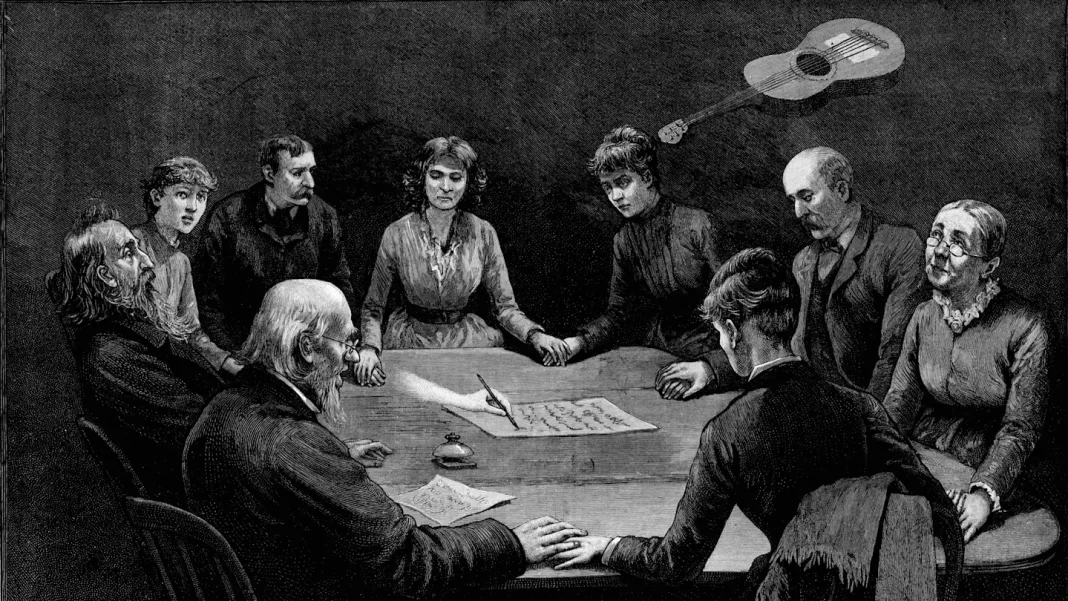

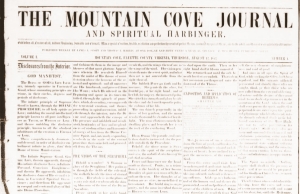


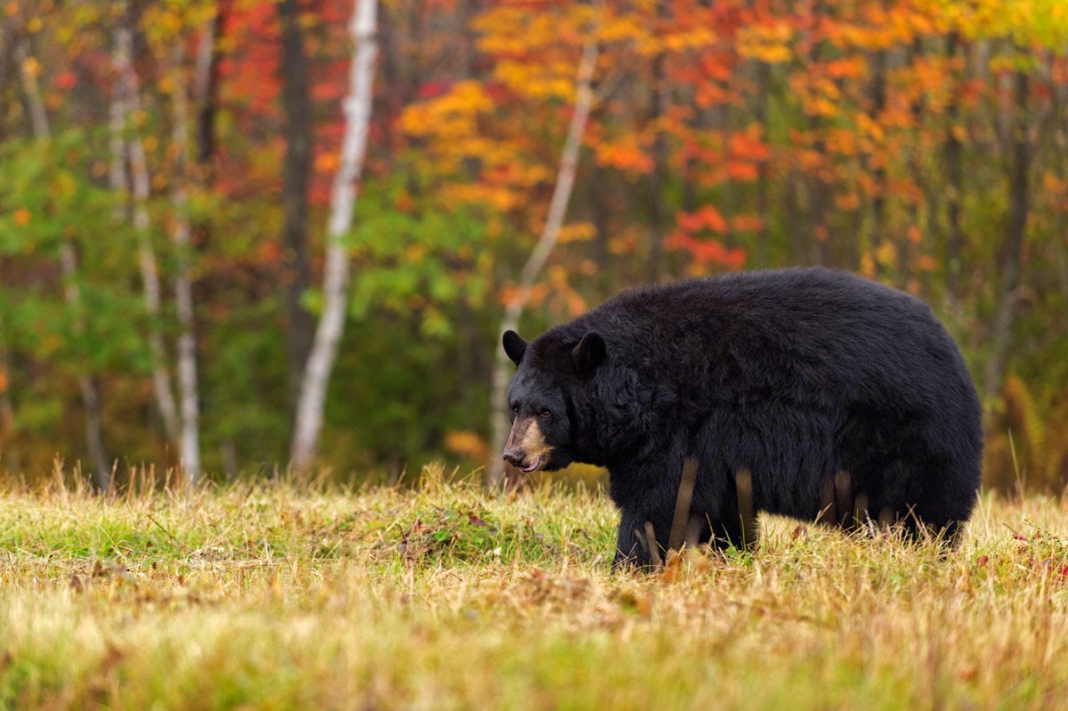
Another piece of WV history of which I was unaware. Thanks so much. Learning a great deal about WV from your articles.
The photograph of a woman with a "ghost" behind her is not from 1857. It is a well-known photo of the widow Mary Todd Lincoln with the "ghost of Abraham Lincoln" behind her. It was taken by "spirit photographer" William H. Mumler around 1870. Sir Arthur Conan Doyle's "The History of Spiritualism" says of Harris, "It is hard to say whether Jekyll or Hyde predominated in his character. He was compounded of extremes, and everything which he did was outstanding for good or for evil."